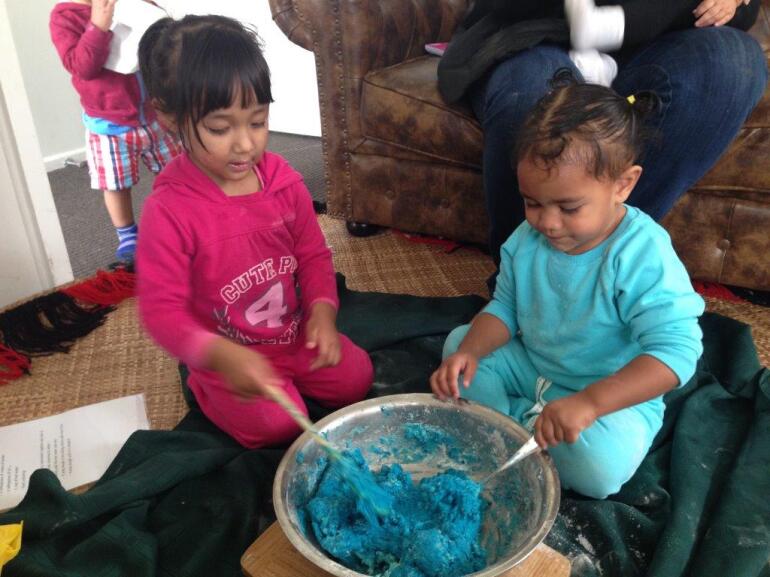News And Events

Playdough - Paraoa Poke
10 February 2016“Playdough is a safe and soothing material and provides children with a great sense of security – it cannot be ‘done wrong’ and is a satisfying sensory experience. It is a useful material for arrival or when settling children . . . although clay and playdough have similar purposes their texture, consistencies and smells are different, and because of this they appeal to children for different reasons.”
Ministry of Education
When children are involved in the making of playdough they are learning about ingredients, measuring, weighing, pouring, mixing, kneading. As part of a group, children learn about turn-taking, sharing, co-operation and patience as each person contributes to the process.
As children measure, mix and knead using their fingers and hand muscles, they are gaining physical skills such as hand-eye and arm-body co-ordination. Children might also use playdough as a medium to engage in ‘pretend baking’ as they act out the process of baking or cooking a meal. This is all part of children using their imagination to make sense of the world around them and to learn new life skills.
Adults can support children with their learning by providing a suitable space for creating the playdough and then an unhurried environment where children can engage with the playdough for any length of time afterwards. As you make the playdough together, you can support children’s learning with talking about the process each step of the way, explaining the ingredients, why we measure them, and asking them open-ended questions such as “what might happen when we stir the ingredients?”, or “what colour shall we make the playdough?”.
For an enhanced sensory experience, you can add herbs (such as oregano, rosemary or mint), scented and edible flowers (such as lavender or nasturtium) or essence/juice (such as lemon, orange or pineapple). You might also have ‘props’ available such as twigs, large stones, mixing bowls, cookie cutters, muffin trays, a garlic press, rolling pins or items such as plastic animals, cars, or blocks so that children may incorporate the playdough into their pretend play.
Here’s our favourite playdough recipe:
- 2 cups of plain flour
- 1 cup of salt
- 4 teaspoons of cream of tartar
- 2 tablespoons of oil
- 2 cups of hot water
- Food colouring
Mix together the hot water and salt, heat in the microwave or on the stove until boiling. Then add the cream of tartar, oil and colouring.
Pour this mixture into the flour and knead until smooth. (Test first before children handle the mixture to ensure it is cool enough to touch).


